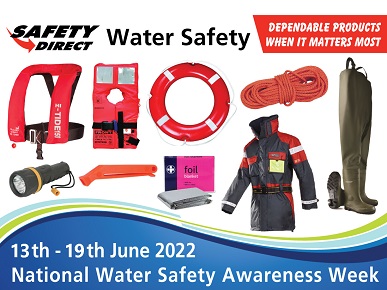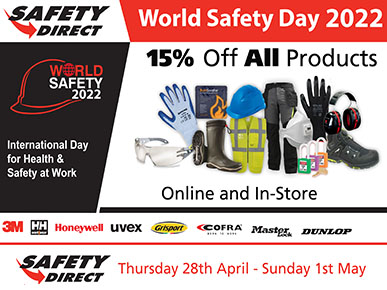Working Safely at a Height - The Importance of Using Ladders Correctly

Ladders and platform steps are widely used across many different industries and workplaces, and are ideal for low-risk and short duration tasks. With widespread use comes a need for education and awareness on how to use a ladder in the most safe and practical way.
The Construction Industry Federation notes that working at height is the greatest contributor to workplace fatalities in construction annually. Many of these falls occur at relatively low heights (2 or 3 metres above ground level). As well as standard safety practices of carrying out risk assessments, it is equally important to learn how to use a ladder appropriately and to choose the right ladder for a task.
Choosing the Correct Ladder
Before choosing a ladder, the below four elements should be considered:
- Height: If a ladder is too short, it can lead to a loss of stability caused by stretching to reach a desired point. For this reason, a ladder slightly higher than the user might need is recommended, to avoid overreaching.
- Safety Standard: The safety standard for portable steps and ladders is EN131, with two classifications - EN131 Professional and EN131 Non-Professional. If a ladder is to be used for commercial purpose, it must be one approved for Professional Use with a load capacity of 150kg. If the ladder is to be used in a private dwelling for non-commercial purposes, a ladder certified for Non-Professional Use can be used.
- Applications: The task and setting will influence the type of ladder chosen. For example if the ladder is to be transported frequently, a compact design is preferable. Non-conductive fibreglass stiles are needed when working around electricity. It is important to assess every element of the task and environment prior to selecting a ladder to ensure the correct one is used.
- Materials: It is crucial to carefully evaluate the properties of different ladder materials before making a decision on ladder style. Depending on the environment and task, a particular material might not be suitable. Some characteristics of two popular ladder materials - fibreglass and aluminium - are listed below:
| Fibreglass | Aluminium |
| Can be used safely near electricity | Not suitable for use near electricity |
| Will not dent, shatter, rust or corrode | Will not rust or corrode |
| Designed and tested for extreme temperatures | Designed and tested for maximum durability |
| High visibility colour | Can be transported and stored easily |
Using a Ladder Safely:
After the appropriate ladder is selected, there are critical safety points that need to be kept in mind:
- Ensure that footwear does not have any excessive mud or grease before climbing and descending a ladder, to avoid slipping
- Weather conditions must be taken into account before commencing work - wet, windy and icy conditions can be extremely dangerous
- Keep an eye out for overhead obstructions such as overhead powerlines
- Use hoists or suitable alternatives for any loads required - never carry them up ladders
- Never use the rungs as a support for planks, or rest rungs on planks
- Always ensure that all ladder feet are placed on firm, level ground. Never place a ladder on a slippery, uneven surface
- If there are any defects noticed upon a visual check prior to use, report these immediately
Safety Direct supply a range of ladders from world leading brands - for the month of March avail of 20% off WAKU and Werner ladders in-store only. Visit our retail store for further information.









